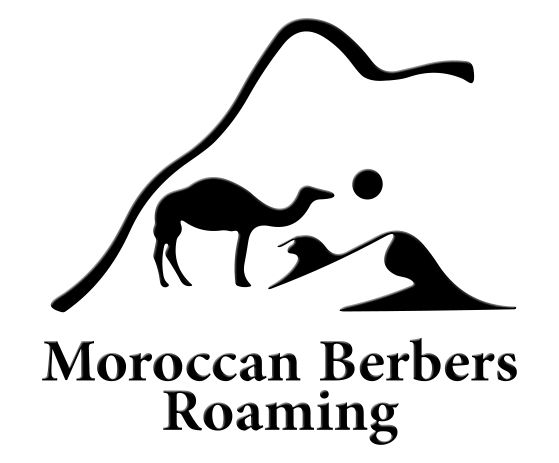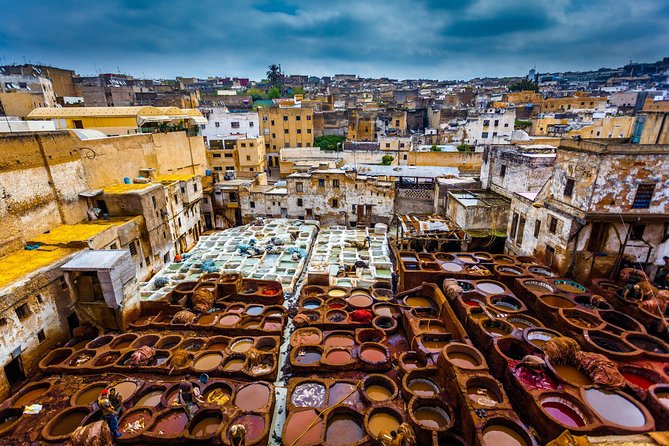Discover the famous beautiful hand made Moroccan carpets.
History of in the National Musuem of Weaving and Carpet Dar Si Said.
Located in the heart of the ancient Medina of Marrakech, the National Museum of Weaving and Carpets Dar Si Said is a true jewel of Berber-Andalusian architecture of the nineteenth centuries. The residence was built following the order of Said ben Moussa, Minister of War at the time of Sultan Moulay Abdel Aziz (1894 – 1908) and brother of Ahmed ben Moussa (bahmad), Grand Vizier and contemporary of the same Sultan. With an area of 2800m?, the museum has accumulated since its creation in 1930 a fund of diverse, rich, rare and splendid collections and important material witnesses of Moroccan culture from the sixteenth century. Since its transfer to the National Foundation of the Museums of Morocco, and following the restoration work that it has seen, the space has reopened its doors and is offering visitors a new scenographic journey highlighting the ancient art of weaving and carpeting while keeping the spirit of the place intact.
The current exhibition is divided into two main axes:
The first axis highlights the richness and diversity of Moroccan weaving. Rural or urban, the authenticity of this know-how is manifested both in the material being used, and in the products obtained. This collection is crowned by a set of objects to decorate the exhibition and present the weaving in its entourage.
The second axis is dedicated to the carpet as a real social and historical milestone. on the Emphasis is placed different phases through which carpet production goes. Carpets are presented in their various forms and representations while focusing on the diversity of production centers located in the four corners of the country.
THE MOROCCAN CARPET, WITNESS OF A RICH HERITAGE
In Morocco, carpets constitute one of the essential components of cultural heritage. Their production bears witness to the richness and rigor of the country’s ancestral know-how since the XVIII century. The most ancient specimen being conserved dates back to 1787 and comes from the region of Chiadma. The importance of the carpet emanates, particularly, from its presence in the daily life of Moroccan families and from the different functions being attributed to it. Therefore, it can serve as a mat, a wall ornament, a cereal bag, a mattress. It also accompanies tents, embellishes horse saddles etc. It is equally present in Zawaya (holy shrines) and Mosques, providing the faithful in their daily rituals with praying carpets. The carpet presents characteristics specific to every region at both the technical and aesthetic levels. In case its making happens nationwide, its typology can be divided into two categories: the urban carpet and the rural carpet:
The urban carpet is traditionally woven in Rabat, Casablanca and Mediouna. It is marked by the density of its mat as well as its rich floral decoration.
The rural carpet has a tendency to be divided into two types, those of the High Atlas and Haouz on the one hand, and those of the Middle Atlas and Oriental Morocco on the other hand. This rural style is known for the dominance of the geometric register with less recourse to anthropomorphic or zoomorphic representations.
THE ORIENTAL CARPET
Unlike the other regions of Morocco, the carpet in the Oriental is woven by the man, the “anargam” (embroiderer). The making of the carpet at Beni Bou Yahi generally precedes a happy event. The brides, indeed, receive it as a dowry in their trousseau. The carpet of this region has an analogy with that of the Middle Atlas, in its exclusively geometric and slightly asymmetrical composition. One can come across triangles, squares, rectangles and so on, repeating or alternating either online or in lozenge compartments.
CARPETS OF ANTI-ATLAS.
The carpet of this region is known for its recourse to the rhombic register in various forms; its structure is based mainly on the symmetry present both at the level of the patterns and at the level of the composition.
CARPETS OF THE HIGH ATLAS
The carpet of the High Atlas is the prerogative of the women of the confederation of Ait Ouaouzguite tribes, located between Ouarzazate and Taznakht. This model is distinguished by high quality wool, and natural colors including henna, saffron, madder and indigo, as well as a floral decorative repertoire, geometric or figurative, inspired by the environment and the daily life of the rural women.
The chain of the carpet of the High Atlas is characterized by a great fineness. Moreover, it’s solidity is due to the use of a type of wool with long fibers. It is dyed in several colors on parallel and successive zones while keeping the overall color of the carpet.
CARPETS OF MARRAKECH HAOUZ
The Haouz carpet of Marrakech is woven in the regions of Oulad Ahmar, Oulad Bousbãa, Chiadma, or Rehamna, and it is characterized by the absence of symmetry and framing The repertory of patterns of this type of carpet is strongly inspired by flora and traditional tattoo often geometric in nature. These heterogeneous compositions are strewn on the field of the carpet without a predefined order.
THE URBAN CARPET
The city carpet, whose oldest models date back to the eighteenth century, mainly includes the carpet of Rabat, Médiouna and that of Casablanca which are related. The urban carpet often offers a framing of several bands which have the effect of considerably reducing the always rectangular and stamped field of an octagonal medal that can be a star, a geometrical figure or a rosette. The presence of a motif in the urban carpet always refers to a symbol or a sign, so the bird in flight is a symbol of good news, the ear of wheat means a birth and abundance, and the horns of a ram signify strength and virility…
CARPET MANUFACTURING STEPS
The weaving of a carpet in Morocco goes through several successive stages, thus creating a complete operating chain.
1. Shearing cutting sheep wool often with the help of shears, a kind of traditional is on.
Note that it is the man who takes charge of this step.
2. Selection: selecting and sorting the wool according to the color, size, fineness and age
of the sheep.
3. Cleaning and degreasing: Removing leftovers from the earth and straw by using natura.
4. Peeling or combing: Separating the long fibers from the short ones.
5. Carding: Eliminating the last impurities and dregs.
6. Spinning: twisting the wool to transform it into strong and consolidated threads.
7. Soaking or coloring: Women still use traditional methods for coloring, a whole range hues are obtained from leaves, flowers, fruits, or sun-dried insects.
8. Warping: planting the pegs and starting the loom’s construction.










